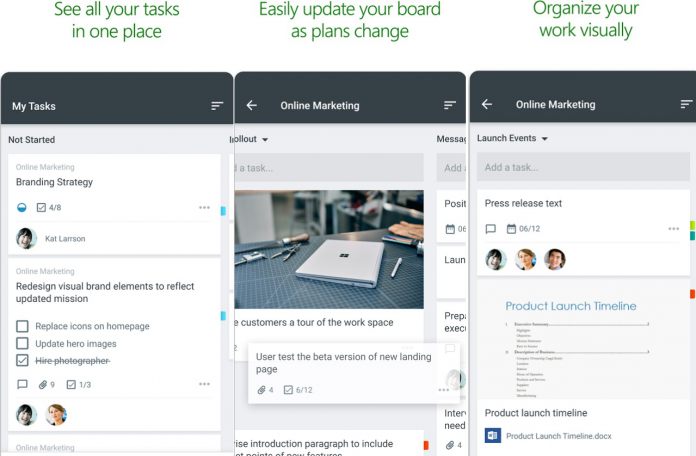The app reached general availability in June 2016 and requires an active Office 365 work or school subscription to work. Microsoft Planner makes it easier for businesses to manage teamwork operations, allowing the creation of team-wide email notifications, project due dates, and visual dashboards. Here is the list of things you can do with Microsoft Planner:
“Organize work visually: Each plan has its own board, where you can organize tasks into buckets. You can categorize tasks based on their status or on whom they’re assigned To update the status or change assignments, just drag and drop tasks between columns. Visibility: The My Tasks view provides a comprehensive list of all your tasks and their status across all your plans. When working together on a plan, team members always know who is working on what. Collaborate: Built for Office 365, Planner lets you work together on the same tasks, attach captured photos directly to them, and even have conversations around tasks without switching between apps. With Planner, all your team’s discussions and deliverables stay with the plan and don’t get locked away across disparate applications. Works across devices: Planner works across all your devices. And with Planner, everyone is always on the same page. Continue conversations and updates tasks while on-the-go or at your desk.”
Planner for Windows 10 Mobile
Back on May 19th, when Microsoft released Planner on iOS, the company hinted on Android and Windows 10 Mobile releases as well. Now that the application has reached the Play Store, it only needs a UWP app in order to reach every possible user. However, Microsoft hasn’t provided a release date for the Windows 10 Mobile app of Planner. If the company follows the usual model, we should see the UWP app arrive sometime in the near future. To download Microsoft Planner for Android, visit the Play Store. You can download the app for iOS at the App Store. For more information on the application, check Microsoft’s video:



